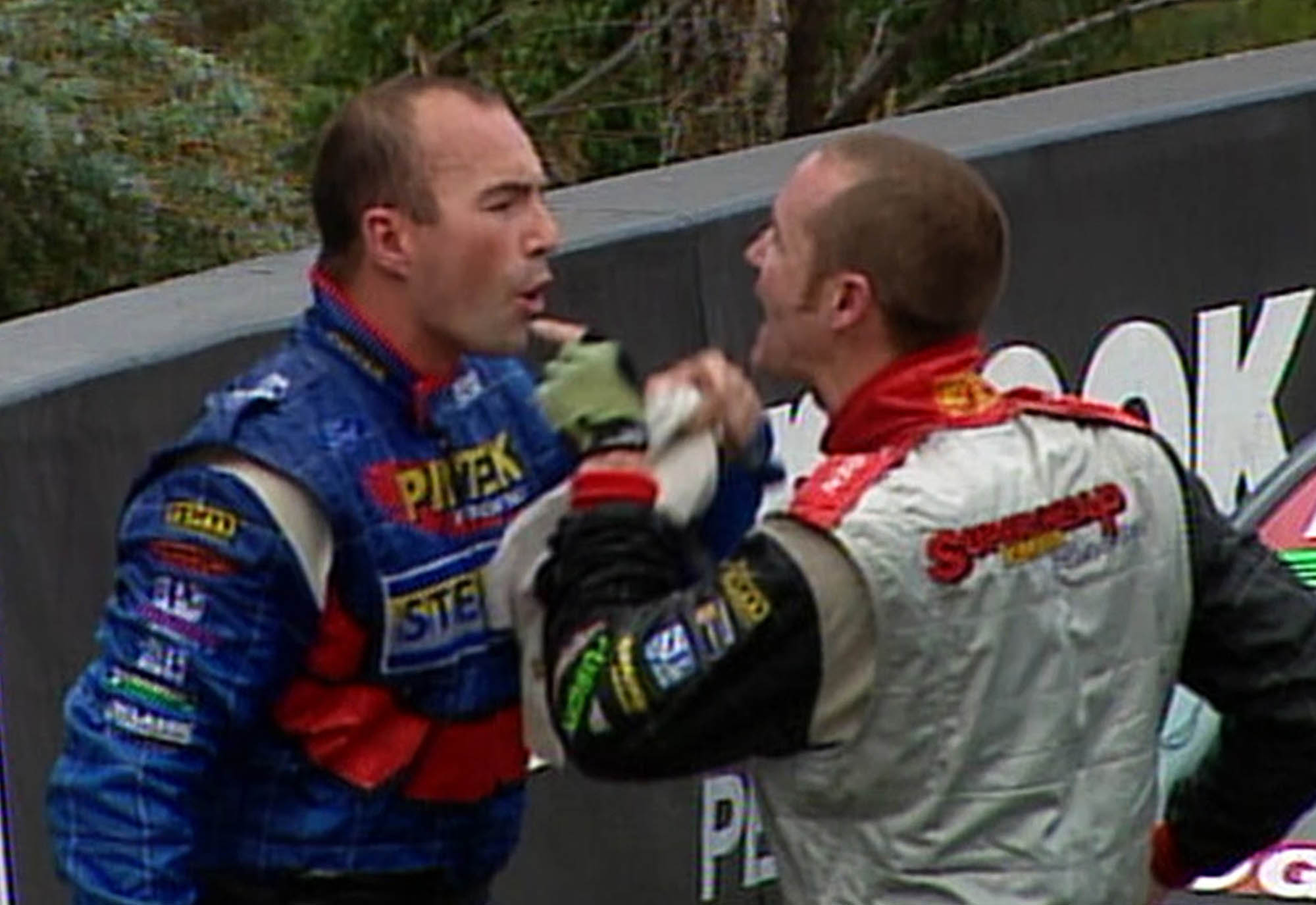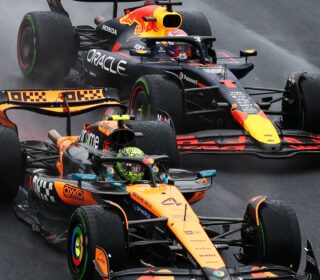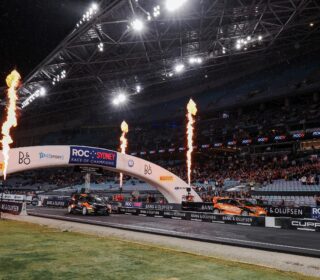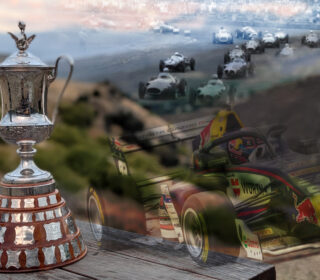The crossroads for motorsport discourse

THERE WILL be a point in the not-too-distant future where our sport needs to decide how it wants to be portrayed.
Does it wish to be within in the realms of the AFL or NRL – with all the extreme theatrical peaks and sometimes challenging pitfalls that come with it – or are they going to continue being something lower-key where everyone gets along but the drama is reduced to kids’ playground levels.
Events last weekend, or more specifically the aftermath of a major crash and the subsequent paddock confrontation is proof that, at the moment, it just doesn’t know.
Motorsport clamours for the kind of moments like the exchange between Will Brown and Mark Winterbottom in the Erebus garage following their coming-together in Race 28 at Pukekohe.
Moments of real passion bring on display like that are few and far between: in a sport where the main protagonists are secluded away from the world, wrapped in layers of protective gear, helmets and secluded within a tin can, there’s little opportunity for them to express true emotions for the world to see.
If a footy player is angry at someone else on the field, the world knows about it immediately and the reactions flow just as quickly.
In Motorsport that kind of expression has to wait until post-race when tempers have (usually) cooled and people are an hour removed from the point of drama actually occurring.
The problem, however, isn’t the timing.
The Brown-Winterbottom accident and its aftermath in the media was clear evidence of the sport wanting to have its cake and eat it too.
Here was a public, visible confrontation with two high profile drivers discussing their points of view.
It was perfect fodder for TV, manna for media and exactly the kind of emotive, personal storyline that elevates a sport beyond the pages at the back of the paper. Human protagonists, unadorned by a racing car skin, voicing their feelings and showing how much it really means.
Which, as we all know, is a lot.
It was the kind of thing they’d play on Drive to Survive and that, right there, is evidence enough of how powerful it can be.
Our sport’s problem is that when the media try to tell more of stories like this, they tend to get shut down.
And then ‘fans’ get angry at the media for reporting further on it, despite the fact that in the darker corners of the social media cesspool they’re all frothing over it already.
Will Brown’s online reaction to the accident was sensational; his comments on his own Facebook page to angry punters were brilliant – witty, funny and a perfect example of the #NoSocialHate campaign that has flowed through the sport.
Unfortunately, soon thereafter he then he posted a link to a Supercars.com story about his confrontation with Winterbottom, expressing his disappointment that they would continue the storyline.
(It’s worth noting that the article in question used only quotes he provided to their official podcast).
While their intent is good and their hearts are clearly in the right place, that and Chaz Mostert’s similar post are ironically somewhat counterproductive.
Everyone, and I mean everyone, in the sport complains about there not being enough media coverage and how it gets buried by the footy codes week in, week out.
Unfortunately, a lot of that same group then complains when an uncomfortable story comes along that has the potential to generate that kind of coverage in the first place.
Cake. Eat it.
The irony of those posts commenting on the media coverage of the sport is that it is counterproductive to the #NoSocialHate message they are trying to promote in the first place.
All it does it just shifts the online discourse away from the protagonists themselves and on to the journo’s, media outlet or admins behind the scenes and believe it or not, they’re people too.
Earlier this year in Townsville my colleague and friend Chad Neylon was pilloried online for his questioning of Shane van Gisbergen and Anton De Pasquale in the press conference, following their final-turn altercation while battling for the win.
Chad was doing his job, as a journalist and commentator, to discuss one of the most dramatic, controversial moments of the year – to talk it up, draw out comments from the drivers’ and generate the kind of discussion that it deserved and warranted.
What he got instead was drivers that, for the most part, tried to shut down the discussion and a barrage of social hate from punters for simply doing his job. Some of the comments were brutal.
What would today’s reaction have been to Greg Murphy and Marcos Ambrose going at it up at the Cutting all those years ago? Nearly two decades later it remains one of the seminal, most-used pieces of footage in Supercars and Bathurst history. It’s part of the fabric of the championship and the race.
Our industry, both those who compete in it and those who support it, need to decide soon about where they stand.
#NoSocialHate is a fantastic campaign. It is well intentioned, comes from the heart, has been broadly accepted by the industry and the media alike and has had positive effects on reducing the level of horrible social media commentary.
However, the very act of speaking out against the media covering the sport only generates more bad commentary and just changes the direction at which it is pointed. Certainly, it does not reduce the Social Hate.
There has to be balance, of course: Max Verstappen has spoken out about the tendency for DTS to, perhaps, over sensationalise some elements of the sport. But assuming that is taken out of the equation – and good journalists should always present balanced reporting on any given topic, given the opportunity – public discourse on touchy subjects are going to be part and parcel of competing in high-level elite sport.
Our industry needs to work out where it sits on these issues.
“The sport is so worried about lighting a fuse that we can’t do the right and logical thing,” one colleague told me.
“No one wants nasty, hurtful stuff but passionately discussing something is an imperative for the sport.
“Reporting on the facts with a sense of balance is key on what is clearly a big subject among the fans is logical. It’s mad to not do it.”
So, here’s the question: Is all this a professional sport where the stakes are high, the rewards large but with the knowledge that there may be issues some don’t like along the way?
Or is it an amateur competition where everyone is matey, the controversial moments are buried – but no one really cares enough to get fired up.
If it’s the latter, then there will need to be acceptance that the sport will lose value: Sponsors will leave, TV income will ultimately dry up because people will lose interest in watching and it will generally regress away from being what it is today.
The reality is, we all know that would never happen: Sport, and motorsport in particular, is built on passion both from those involved and those following along.
Where there is passion and more than one opinion, there will always be disagreement. And that’s fine.
It’s time that our game learns to deal with the fact that sometimes there’s going to be negativity, in the same way that the AFL, NRL and other professional sports do.
Believe in #NoSocialHate. Live to that ideal as best you can, because it is a fantastic thing.
But we need to be careful, because merely shifting the hate from one side of the industry to another really doesn’t stop it at all.







